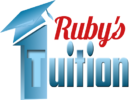OUR SERIES GUIDE TO THE GCSE ENGLISH LANGUAGE PAPER -SERIES ONE: ANSWERING AQA Q4 & EDEXCEL Q7 COMPARISON QUESTIONS
We have noticed that our students find comparison questions most unnerving in their English Language & Literature exam. In order to produce a successful response to this question students require a clear structure that outlines their argument, perceptive analysis, and relevant quotations. In this series guide, we will offer multiple examples of how to demonstrate a detailed understanding between the two writer’s ideas.
In Paper 2 Question 4 for AQA & Question 7 for Edexcel, is the highest marked question in both papers, we advise students to practise answering this question in an appropriate timed condition. E.g for a 16-mark question, allow 20 minutes. If you struggle with timing, try answering this question first in the exam, then the longest and scariest question will be completed, and you can focus on answering the rest of the questions in the paper.
EXAMPLE ONE: AQA – ENGLISH LANGUAGE PAPER TWO (JUNE 2018)–
Q4. For this question, you need to refer to the whole of Source A, together with the whole of Source B.
Compare how the writers convey their different perspectives ( = opinion / idea / attitude) on surfing.
In your answer, you could:
- compare their different perspectives on surfing
- compare the methods (= Literary Technique) the writers use to convey their perspectives
- support your response with references to both texts.
HOW TO PLAN A COMPARISON QUESTION
STEP A– Your first point of contact should be to refer back to both sources and create a general list of the author’s perspective on the subject (surfing):
|
SOURCE A – Mike Doyle’s Opinion (1993) |
SOURCE B – Isabella Bird’s Opinion (1875) |
|
|
STEP B -Then you can address the methods each author uses. At this stage it is helpful to look for linguistic devices one or both authors use as you can draw comparisons from these.
|
SOURCE A – Mike Doyle’s Methods (1993) |
SOURCE B – Isabella Bird’s Methods (1875) |
|
|
STEP C: Finally select relevant quotations to support your findings.
| SOURCE A – Mike Doyle’s Quote (1993) | SOURCE B – Isabella Bird’s Quote (1875) |
|
|
Once you have completed steps A-C you will need to bring your points together in a structured argument. For this question, we suggest picking 3 of your favourite points. By ‘favourite’ we mean the points that show clear comparisons/similarities and those that you can write the most word analysis. It is your analysis and use of subject terminology for this particular question that will reward you with the highest mark within that grade bracket.
HOW TO STRUCTURE COMPARISON PARAGRAPHS
PEE Colour Code:
- Point – in your opening sentence of each paragraph you need to outline clearly the point you want to make. In order to do this correctly, identify the linguistic device and what kind of perspective is portrayed.
- Evidence – this is where you will select a relevant quote to support your point and where you will draw your analysis from. Select quotes where there are key phrases/terms that you can analyse or show a literary technique.
- Subject terminology – remember to use this in your analysis as it will show the marker your awareness of literary methods and their effect
- Explain – in your response, think about how this phrase/term creates an image, mood/feeling, or meaning (whether literal = DENOTATION), or (suggested = CONNOTATION)
- Link (point back to the question) – it is all very well to demonstrate to the marker your PEE skills but in order to demonstrate that you have understood and are answering the QUESTION, we recommend that at the end of your paragraphs you link your findings back to the question.
- Comparison – here you must use a comparative connective to introduce your next point and how the writer’s method is similar/different between each source. Then you must compare how this method conveys a different/similar perspective of the subject (surfing).
EXEMPLARY COMPARATIVE PARAGRAPH WITH PEE COLOUR CODE:
It is evident from these extracts that the writers in both source A and B use figurative language to describe the surfers in a complimentary manner. For example, in Source A Mike Doyle uses a metaphor to describe the surfers as “bronzed gods, all in incredibly good shape, happier and healthier than anybody I’d ever seen.” The denotations of “bronzed” as an indication of golden skin together with the denotations of “god” as a superior figure, suggests to the reader that surfers are both powerful and beautiful. The alliteration that appears in “happier and healthier,” captures Doyle’s joyous mood and emphasises his admiring attitude towards the surfer’s impeccably toned bodies.
Similarly, Isabella Bird uses figurative language to describe the elegance of the surfers she observes. She reports that the surfers “rode in majestically…carried shorewards by its mighty impulse at the rate of forty miles an hour.” Her use of the adverb “majestically,” illustrates the surfer’s beautiful and impressive skill. Personifying the sea as a “mighty impulse,” connotes to the reader similar images of God that appeared in Source A. In this quote, Bird recognises nature as the authoritative godly figure but for Doyle the God-like figure is the surfers. From this, we can infer that Doyle’s perspective of surfing is higher than Bird’s. Nevertheless, both authors insert metaphors in their texts to commemorate the surfer’s incredible beauty and extraordinary talents. In Source B, the surfers are able to overcome the “mighty impulse,” of the sea with impressive speed which emphasises their remarkable strength and reveals Bird’s positive perspective of surfing.
